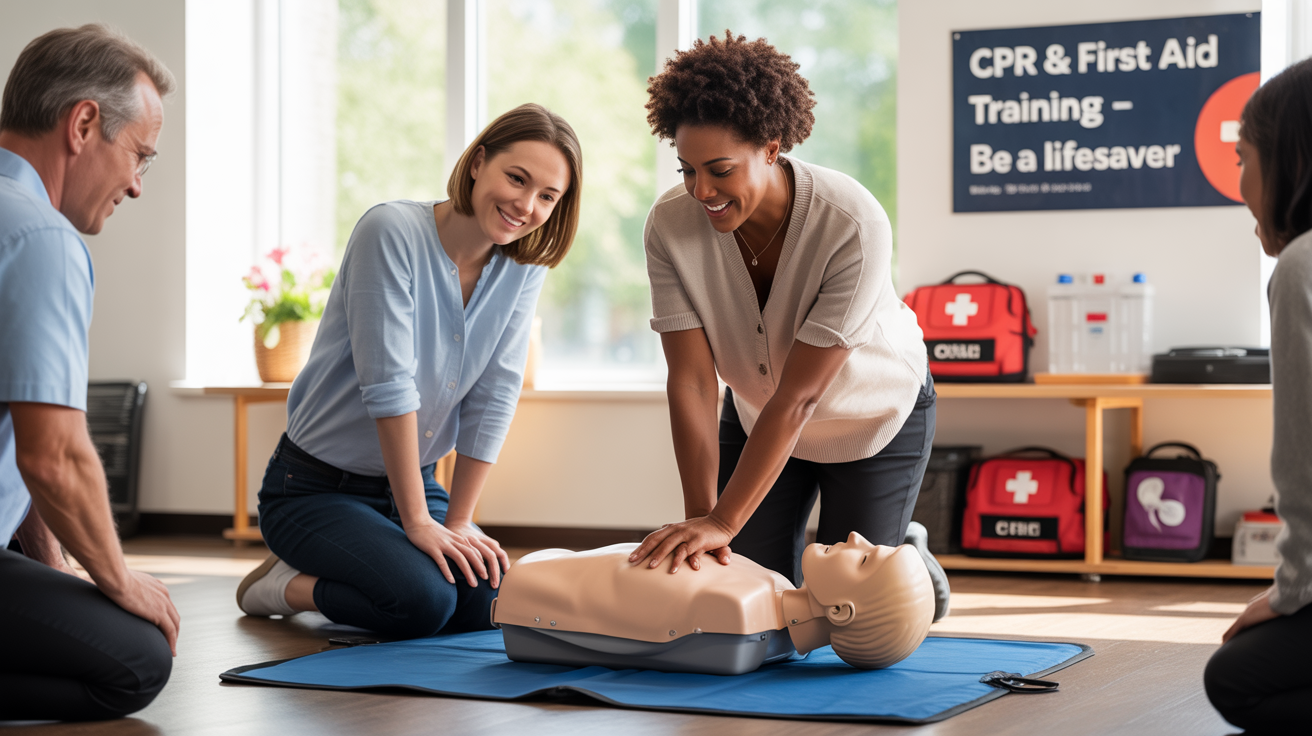When designing the perfect home, most people focus on aesthetics, comfort, and functionality. However, one of the most important aspects of a home that is often overlooked is safety and preparedness. While a beautifully designed home offers a welcoming environment, ensuring that it is a safe space for all family members is equally essential.
One key area to address is the need for CPR and First Aid training in Windsor, as these life-saving skills equip homeowners with the knowledge to handle medical emergencies, ensuring the well-being of loved ones in times of crisis.
Why Home Safety Matters
We often think of safety in terms of securing the home—locking doors, installing alarms, and maintaining the property. While these are all important, true safety extends beyond security systems. Accidents and medical emergencies can occur unexpectedly, and a well-prepared home should have measures in place to handle such situations.
Whether it’s a child falling or an elderly family member having a medical issue, knowing how to respond quickly and effectively can save lives.
Investing in home safety goes hand in hand with creating a comfortable, functional living environment. It’s not just about avoiding accidents but also ensuring that when something does happen, you’re equipped to deal with it confidently.
The Role of First Aid and CPR in Home Safety

Responding to Medical Emergencies
Accidents, injuries, and medical emergencies can happen at any time, and they don’t always occur in a hospital or under ideal conditions. Having someone at home who is trained in CPR and First Aid can make all the difference when it comes to responding quickly to health issues.
In many cases, immediate action can stabilize someone until professional medical help arrives. From heart attacks to choking incidents, CPR and First Aid training ensures that you’re not caught off guard and can act swiftly in a crisis.
Peace of Mind for the Whole Family
Knowing that every member of your family or household is equipped with the skills to respond in emergencies creates a sense of security. Whether you’re home alone with young children or managing a busy household with elderly relatives, being trained in CPR and First Aid reduces the anxiety that comes with not knowing how to help in an emergency situation. It’s equally important to regularly renew your CPR certification to ensure your skills stay sharp and up-to-date with the latest guidelines.
Accidents Happen
At home, the risks of injury are often higher than people realize. Falls, burns, cuts, and allergic reactions are common household accidents, and knowing how to treat these injuries is crucial. CPR and First Aid training empowers individuals to handle these incidents until further medical help is available.
Creating a Safe and Well-Prepared Home
In addition to CPR and First Aid training, there are several other ways to make your home safer and more prepared for emergencies:
Install Safety Features Throughout Your Home
Many home improvements focus on making the space aesthetically pleasing, but it’s just as important to ensure it is functional and safe. Installing non-slip rugs, baby gates, and safety rails can prevent falls and accidents. You should also ensure that smoke detectors, fire extinguishers, and carbon monoxide detectors are installed and regularly maintained.
Create a Family Emergency Plan
Having a plan in place for various emergencies is vital. Establish and communicate an emergency procedure for fire, weather events, medical situations, and natural disasters. Make sure that everyone in the home is familiar with the plan and knows where essential items, such as First Aid kits, fire extinguishers, and flashlights, are kept.
Designate a First Aid Station
A well-stocked First Aid kit is an essential part of every home. Make sure that your kit includes supplies for common injuries and ailments such as bandages, antiseptic wipes, pain relievers, and any medications that your family members may require. Keep this kit in an accessible location and ensure everyone knows where to find it.
Childproof and Petproof Your Home
Homes with children or pets require extra precautions. Secure heavy furniture, protect sharp corners, and store hazardous materials out of reach. These safety measures minimize the chances of accidents and ensure that the home remains a safe space for all.
The Benefits of Investing in First Aid and CPR Training for the Whole Family

Health and Wellness at Home
Beyond just responding to accidents, CPR and First Aid training contribute to overall family health and wellness. Being equipped with knowledge about medical emergencies, proper nutrition, and basic health practices helps improve the quality of life and ensures your loved ones are protected.
Creating a Safe Community
The benefits of CPR and First Aid training extend beyond the home. By having more trained individuals in your community, you’re contributing to a safer, more resilient environment. Whether it’s a neighborhood event or a casual social gathering, knowing that there are people trained to handle medical emergencies creates a stronger, more prepared community.
Improved Family Dynamics
Being able to respond to health emergencies as a team improves the overall safety of your family. It fosters a sense of responsibility and unity, ensuring that everyone knows their role and can help out when needed. This promotes a supportive, trusting family environment.
Conclusion: Prioritizing Safety and Wellness in Your Home
A home should be a sanctuary for relaxation and comfort, but it should also be a place where safety and preparedness are prioritized. CPR and First Aid training are essential tools that equip you with the knowledge to protect your loved ones and handle emergencies with confidence. By investing in these life-saving skills and creating a home that is both functional and secure,
you’re not only ensuring that your family is safe but also promoting a lifestyle that values well-being and care.


